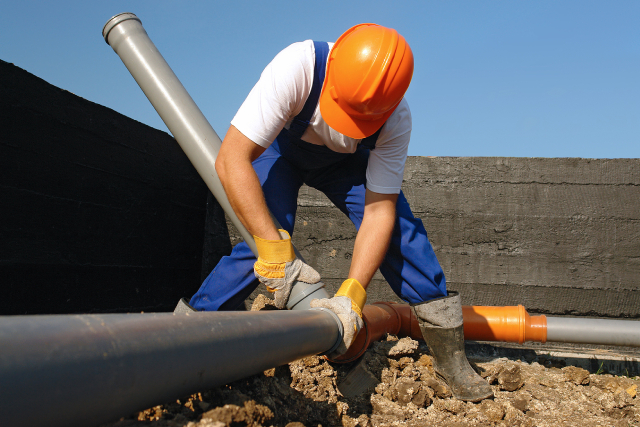
27 Aug Common Mistakes In PVC Pipe Fitting You Should Know
PVC pipe fitting is an essential skill for many DIY enthusiasts and professional plumbers alike. It’s a widely used material in plumbing systems due to its durability, cost-effectiveness, and ease of installation. PVC, or polyvinyl chloride, pipes are commonly used for various applications, including water supply lines, drainage systems, and irrigation setups. Additionally, PVC pipe applications in civil engineering are extensive, ranging from sewage systems to stormwater management, showcasing the versatility and reliability of this material. However, despite its simplicity, there are several common mistakes that can occur during PVC pipe fitting, leading to potential problems in the plumbing system.
Understanding these mistakes and knowing how to avoid them can save time, money, and frustration. Below, we share the most common errors people make when working with PVC pipe fitting and provide tips on how to correct them. Whether you’re a seasoned plumber or a weekend DIY warrior, these insights will help ensure your projects are seamless and long-lasting.
Mistake 1: Incorrect pipe cutting
One of the most frequent mistakes in PVC pipe fitting is improper cutting of the pipes. A clean, straight cut is crucial for ensuring a secure fit and leak-proof joints. Using inappropriate tools or techniques can result in jagged edges or uneven cuts. To avoid this, always use a specialised PVC pipe cutter or a fine-toothed saw. Ensure the cut is straight by using a mitre box or similar guide, and deburr the edges with a utility knife or sandpaper to remove any burrs or rough spots.
Mistake 2: Ignoring pipe cleaning
Before joining PVC pipes, it’s essential to clean them thoroughly. Dirt, grease, and other contaminants can prevent proper adhesion of the solvent cement, leading to weak joints and potential leaks. Use a clean cloth and PVC primer to remove any debris from the pipe ends and fittings. The primer also softens the PVC surface, allowing for better bonding with the cement.
Mistake 3: Incorrect application of primer and cement
Applying PVC primer and cement correctly is critical for creating strong, leak-proof joints. A common error is using too much or too little primer and cement. Too much can create a mess and weaken the joint, while too little won’t provide a strong bond. Apply an even coat of primer to both the pipe and the fitting, followed by a thin, even layer of cement. Quickly insert the pipe into the fitting and twist a quarter turn to spread the cement evenly.
Mistake 4: Insufficient drying time
Patience is key when working with PVC pipe fittings. Another common mistake is not allowing sufficient drying time for the cement to cure properly. Prematurely pressurising the system or handling the pipes before the cement has set can result in leaks and weak joints. Follow the manufacturer’s instructions for drying times, which can vary depending on the cement type and environmental conditions. Typically, it’s best to wait at least 24 hours before testing the system under pressure.
Mistake 5: Misalignment of pipes
Proper alignment of PVC pipes is crucial for maintaining the integrity of the plumbing system. Misalignment can cause stress on the joints and lead to leaks or pipe failure. Ensure that the pipes and fittings are aligned correctly before applying the cement. Use pipe supports or clamps to hold them in place while the cement sets, and double-check the alignment before proceeding with the next section of the project.
Mistake 6: Overlooking pipe expansion and contraction
PVC pipes expand and contract with temperature changes, and failing to account for this can lead to problems. When installing PVC pipes, allow for expansion and contraction by incorporating expansion joints or loops in long runs of piping. This will prevent stress on the joints and potential pipe failure due to temperature fluctuations.
Mistake 7: Inadequate pipe support
Proper support is essential for any plumbing system, and PVC pipes are no exception. Inadequate support can lead to sagging pipes and joint stress, resulting in leaks or pipe failure. Install pipe hangers or supports at regular intervals, as recommended by the pipe manufacturer. Ensure that the supports do not compress or pinch the pipes, as this can cause damage over time.
Mistake 8: Using the wrong type of PVC pipe
There are different types of PVC pipes, each designed for specific applications. Using the wrong type can result in system failure or health hazards. For example, PVC pipes used for drinking water must be certified for potable water use, while those used for drainage systems should be designed to handle waste and chemicals. Always check the pipe specifications and ensure you are using the appropriate type for your project.
Mistake 9: Ignoring local building codes and regulations
Compliance with local building codes and regulations is crucial when installing PVC pipe systems. Ignoring these codes can result in unsafe installations and potential legal issues. Before starting your project, familiarise yourself with the local codes and obtain any necessary permits. This will ensure your installation is safe, legal, and up to standard.
Mistake 10: Skipping pressure testing
Pressure testing is an essential step in verifying the integrity of a newly installed PVC pipe system. Skipping this step can leave you unaware of leaks or weak joints that could cause problems later on. After the installation is complete and the cement has cured, perform a pressure test to check for leaks and ensure the system is functioning correctly. This proactive step can save you from costly repairs and headaches in the future.
Conclusion
PVC pipe fitting may seem straightforward, but avoiding these common mistakes is crucial for a successful and durable installation. For those seeking quality PVC piping solutions, Vicplas offers an extensive range, including SS272 and SS141 UPVC pipes, among many others. Whether you’re a professional plumber or a DIY enthusiast, Vicplas provides the reliability and performance needed for all your plumbing projects. Explore our offerings and ensure your next PVC pipe fitting project is a success!
